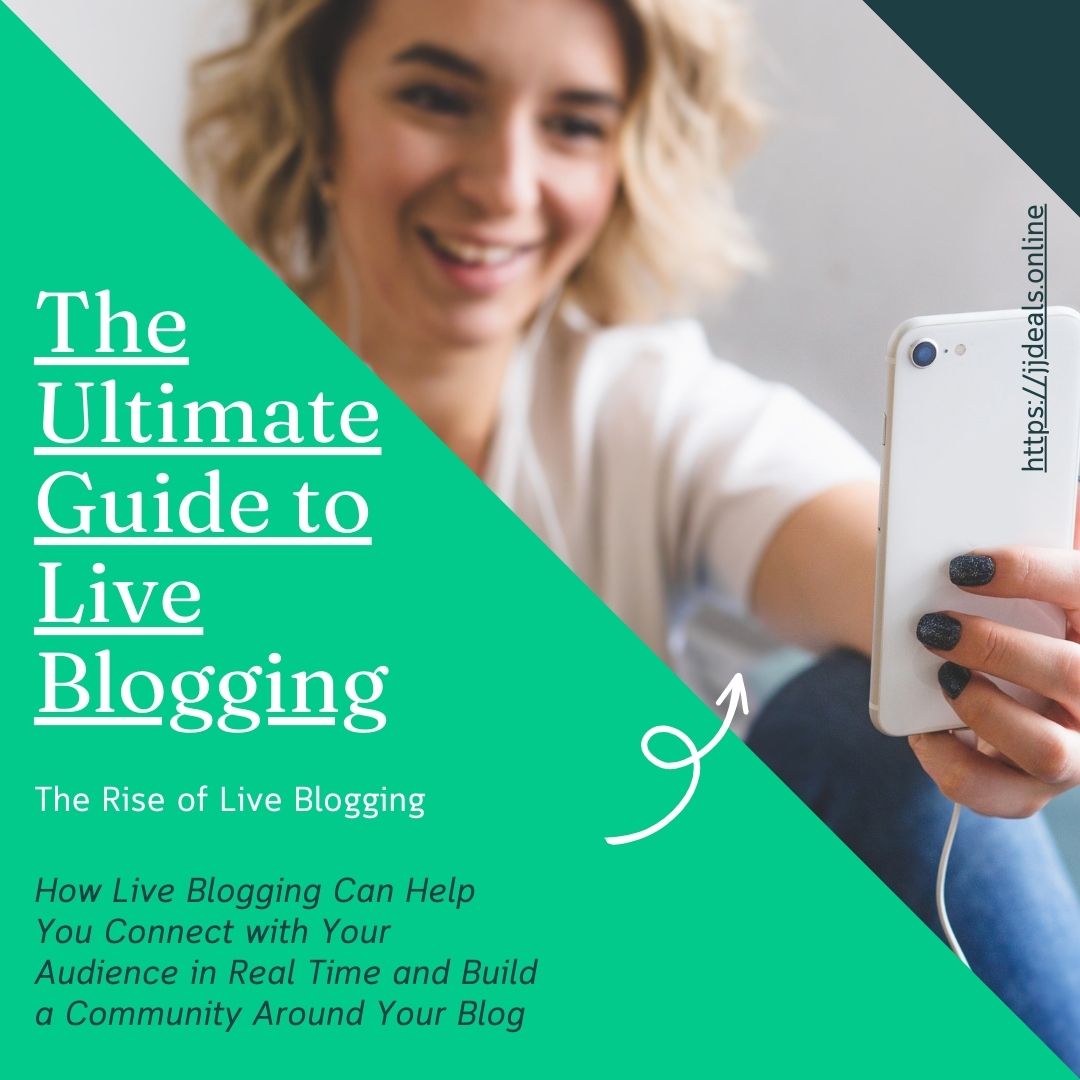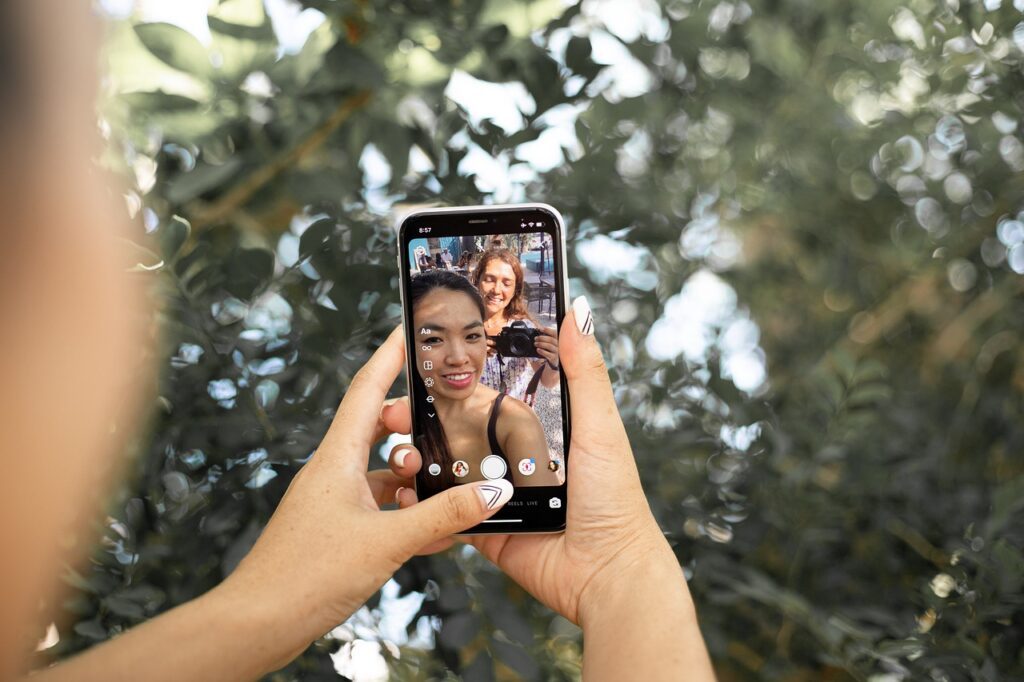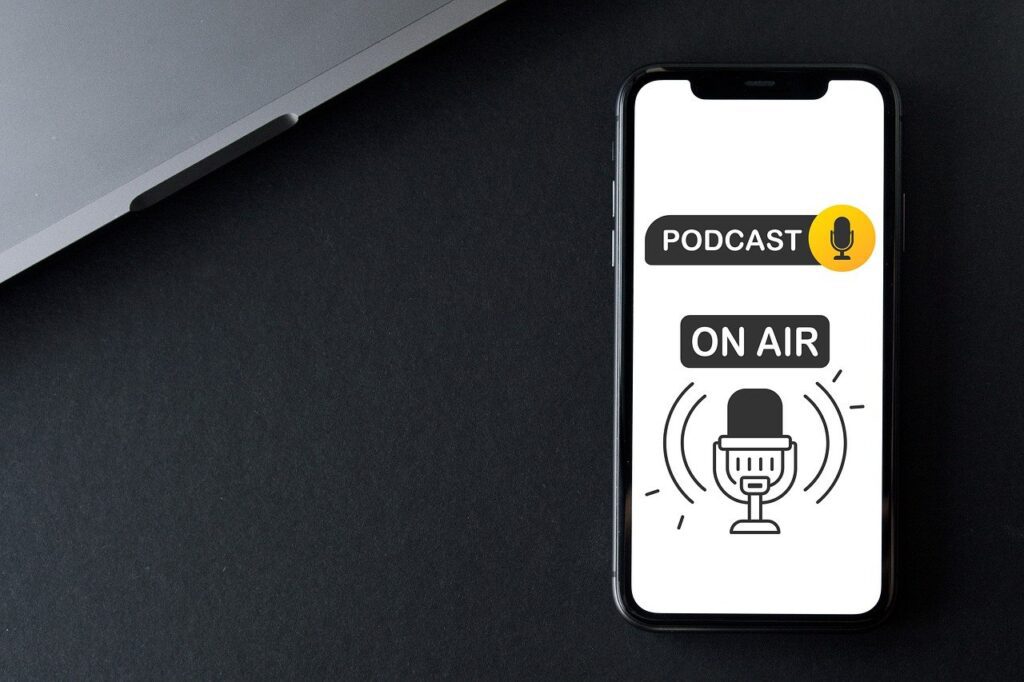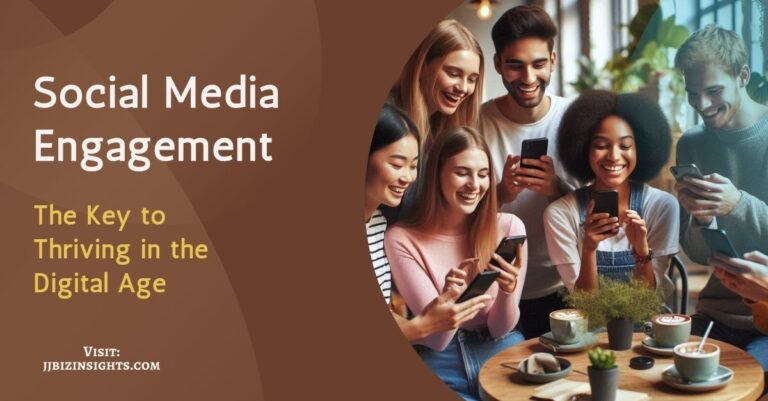
The Ultimate Guide to Live Blogging
Live Blogging: The Ultimate Guide. The Rise of Live Blogging: How Live Blogging Can Help You Connect with Your Audience in Real Time and Build a Community Around Your Blog
Live blogging, a dynamic practice of providing real-time updates about an ongoing event, offers an exceptional opportunity to connect with your audience instantaneously and foster a vibrant community around your blog.
The advantages of live blogging are manifold. Firstly, it enables you to disseminate information as it unfolds, making it particularly valuable for breaking news or events happening in the present moment. This real-time delivery ensures that your readers stay informed and engaged throughout the event’s duration. Secondly, live blogging facilitates direct interaction with your audience, allowing you to engage in immediate discussions and receive valuable feedback on your content. Building these connections strengthens relationships with your readers and enhances the sense of community on your blog. Thirdly, the act of live blogging itself can significantly boost traffic to your blog. As people observe your live updates, they are enticed to visit your blog to follow the unfolding event and gain unique insights from your perspective.

However, successful live blogging requires careful preparation and consideration. Ensuring a reliable internet connection is paramount, as live blogging demands substantial data usage. A strong and stable connection will guarantee seamless communication with your audience without interruptions. Additionally, having a well-thought-out plan for your live blogging session is essential. Know beforehand what key points you want to cover and the angles you want to explore. Avoid starting live blogging without a clear direction, as this can lead to disorganized and disjointed updates. Lastly, being responsive and interactive with your audience is vital. Engage actively with comments, questions, and reactions from your readers to make them feel heard and valued.
By embracing the challenges and dedicating the effort, live blogging can undoubtedly become an effective means to connect with your audience in real time and establish a thriving community around your blog. The immediate and immersive nature of live blogging fosters a sense of shared experience, building a loyal readership that actively engages with your content and forms lasting connections with your blog.
Here are some tips for live blogging
Choose the right event to live blog
- Not every event is a good fit for live blogging. You want to choose an event that is interesting to your audience and that you are passionate about.
Choosing the right event to live blog is a crucial aspect of successful live blogging. Not all events will be suitable for live coverage, and making the right choice can significantly impact the engagement and interest of your audience. Here are some points to consider when selecting an event for live blogging:
- Relevance to Your Audience: Consider the interests and preferences of your target audience. The event you choose should align with the topics and themes that resonate with your readers. For instance, if your blog focuses on technology, live blogging a tech conference or product launch would be highly relevant and appealing to your audience.
- Engagement Potential: Evaluate the potential for engagement and interaction with your audience during the event. Events that encourage active participation, discussions, or Q&A sessions can make for compelling live blogging opportunities. Engaging with your audience in real-time enhances their experience and fosters a sense of community around your blog.
- Timeliness and Newsworthiness: Live blogging is particularly effective for breaking news or time-sensitive events. Choose events that have a sense of urgency or newsworthiness, as they can attract a broader audience seeking immediate updates and insights.
- Your Passion and Expertise: Live blogging requires enthusiasm and dedication to deliver real-time updates and meaningful commentary. Choose an event that you are genuinely passionate about and have a good understanding of. Your passion will come through in your live updates, making the content more engaging and authentic.
- Coverage Access: Consider the availability of access to the event for live coverage. Some events may require press passes or special invitations. Ensure that you have the necessary access and permissions to provide live updates from the event.
- Diversity of Events: While sticking to your niche is essential, occasional diversification can also be beneficial. Consider covering a variety of events that provide a broader range of content and cater to different aspects of your audience’s interests.
- Potential for Exclusive Content: Look for events that offer the opportunity to share exclusive content or behind-the-scenes insights. Providing unique and exclusive content enhances the value of your live blogging and incentivizes readers to follow your updates.
Ultimately, the event you choose to live blog should align with your blog’s niche, cater to your audience’s interests, and allow for active engagement. By selecting the right events, you can create compelling live blogging experiences that captivate your audience, build trust, and foster a sense of community around your blog

Live Blogging: Do your research
- Before you start live blogging, make sure you know as much as you can about the event. This will help you answer questions from your audience and keep your updates interesting.
Doing thorough research before you start live blogging is essential to provide accurate, insightful, and engaging updates for your audience. Here’s why research is crucial and how it can enhance your live blogging experience:
- Accurate and Informed Updates: Researching the event beforehand ensures that you have accurate and up-to-date information. You’ll be better equipped to report facts, figures, and key details without errors or misinformation. This builds credibility and trust with your audience, as they rely on you for reliable updates.
- Knowledgeable Responses: During the live blogging session, your audience may ask questions or seek clarifications about the event. Being well-prepared through research enables you to provide knowledgeable responses promptly. Your ability to answer queries enhances the value of your live blogging and encourages further engagement from your audience.
- Uncover Interesting Insights: In-depth research can help you uncover interesting insights or lesser-known aspects of the event. By sharing unique and compelling information, you can add depth to your live blogging updates and keep your audience engaged and intrigued.
- Identify Key Points to Focus On: Researching the event’s agenda or schedule allows you to identify key points, highlights, and significant moments that warrant special attention. This helps you structure your live blogging updates effectively and prioritize the most relevant information for your audience.
- Prepare Visuals and Multimedia: Researching the event theme or subject matter can also help you prepare relevant visuals, images, or multimedia elements to enhance your live blogging updates. Visual aids can make your content more engaging and help convey information effectively.
- Anticipate Trends and Developments: Through research, you can anticipate potential trends, developments, or announcements that may occur during the event. This foresight allows you to stay proactive and prepared to deliver timely updates as they unfold.
- Stay Ahead of Competitors: In highly competitive environments, research gives you an advantage over other live bloggers who may not be as well-prepared. Being well-informed enables you to stand out and offer a unique perspective, attracting more readers and followers.
- Maintain Consistency: Thorough research ensures that your live blogging updates remain consistent in tone, style, and quality. Consistency enhances the overall user experience and reinforces your blog’s brand identity.
Remember that live blogging is a real-time endeavor, so having a solid foundation of knowledge through research enables you to stay on top of the event and deliver valuable insights to your audience as it happens. The more prepared you are, the more engaging and informative your live blogging updates will be, creating a positive and memorable experience for your readers.

Live Blogging: Be prepared to interact with your audience
- Live blogging is a two-way street. You need to be prepared to answer questions from your audience and respond to their comments.
Being prepared to interact with your audience is a critical aspect of successful live blogging. Live blogging is not just about one-sided communication; it’s a dynamic and interactive experience that involves engaging with your audience in real-time. Here’s why interaction is important and how it enhances the live blogging experience:
- Foster Engagement: Interacting with your audience creates a sense of community and engagement. Responding to comments and questions shows that you value your readers and are attentive to their needs. This fosters a positive and interactive atmosphere, encouraging more people to participate and actively follow your live blogging updates.
- Build Relationships: Live blogging provides an excellent opportunity to build relationships with your audience. By being responsive and approachable, you humanize your blog and create a connection with your readers. Building relationships leads to increased loyalty and trust, turning occasional readers into regular followers.
- Gather Feedback: Interacting with your audience allows you to gather valuable feedback on your content and live blogging approach. Pay attention to their comments, suggestions, and reactions. This feedback can help you understand what resonates with your audience and guide improvements for future live blogging sessions.
- Clarify Information: During the live blogging event, your audience may seek clarification on certain points or ask for more context. Being prepared to answer questions in real-time ensures that your updates are informative and helpful to your readers.
- Address Concerns Promptly: Sometimes, your audience may express concerns or raise issues related to the event or your content. Responding promptly and professionally to address these concerns demonstrates that you care about their opinions and are willing to address any issues that arise.
- Enhance User Experience: Interactive live blogging creates a more enjoyable and personalized experience for your audience. It gives them a sense of participation and involvement, making the live blogging session more memorable and meaningful.
- Encourage Sharing and Discussion: When you interact with your audience, you encourage them to share your live updates on social media and invite others to join the conversation. This organic sharing can lead to increased visibility and attract new readers to your blog.
- Adapt to Audience Preferences: Interacting with your audience allows you to gauge their interests and preferences in real-time. This adaptability enables you to tailor your live blogging updates to suit your audience’s needs, making your content more relevant and valuable to them.
Remember that live blogging is not just about providing information; it’s about creating an engaging and interactive experience for your readers. Being prepared to interact with your audience during live blogging sessions builds a stronger connection with your readers, encourages participation, and fosters a vibrant and thriving community around your blog.
Live Blogging: Use social media
- Share your live blog updates on social media to reach a wider audience.
Using social media to share your live blog updates is a powerful strategy to expand your reach and engage with a broader audience. Social media platforms offer a vast and diverse user base, making them ideal channels to promote your live blogging content. Here’s why using social media is essential and how it can maximize the impact of your live blogging efforts:
- Reach a Larger Audience: Social media platforms have billions of active users, creating a massive potential audience for your live blog updates. By sharing your live blogging content on social media, you can reach people who may not be regular visitors to your blog but are interested in the event or topic you are covering.
- Amplify Visibility: Social media sharing increases the visibility of your live blogging updates. As people like, share, or comment on your posts, their connections also become exposed to your content, leading to a snowball effect of increased exposure and engagement.
- Real-Time Updates: Social media’s real-time nature complements live blogging perfectly. When you share your live blog updates on social media, you provide your followers with immediate access to the latest information and insights, encouraging them to stay connected throughout the event.
- Drive Traffic to Your Blog: Sharing live blog updates on social media creates a pathway for users to visit your blog directly. By including links or calls-to-action in your social media posts, you encourage users to click through to your blog to access the full live blogging coverage.
- Encourage Sharing and Engagement: Social media platforms facilitate easy sharing, allowing your audience to repost your live blog updates on their own profiles. This sharing behavior extends your content’s reach and encourages more engagement and discussion around your live blogging session.
- Utilize Hashtags: Incorporating relevant hashtags in your social media posts increases discoverability. Hashtags enable users interested in the event or topic to find your live blogging updates more easily. Research popular and trending hashtags related to the event to maximize exposure.
- Multi-Platform Presence: Social media provides access to various platforms like Twitter, Facebook, LinkedIn, and Instagram. Sharing your live blog updates across different platforms allows you to engage with users from diverse backgrounds and preferences.
- Interactive Engagement: Social media enables real-time interactions with your audience. Respond to comments, answer questions, and acknowledge feedback from your followers. This interactive engagement fosters a sense of community and encourages continued participation.
Remember to optimize your social media sharing strategy by coordinating posts with the timing of your live blogging updates. Use eye-catching visuals and concise, compelling captions to capture the attention of users as they scroll through their feeds. With social media as a powerful ally, your live blog updates can reach a wider audience, spark conversations, and create a ripple effect of interest and engagement across various platforms.

Live Blogging: Have fun!
- Live blogging should be enjoyable. If you’re not having fun, your audience won’t either.
Having fun while live blogging is essential for creating an enjoyable and engaging experience for both you and your audience. When you genuinely enjoy the live blogging process, your passion and enthusiasm will shine through in your updates, making the content more compelling and resonating with your readers. Here’s why having fun is crucial and how it impacts your live blogging sessions:
- Authenticity and Enthusiasm: When you have fun while live blogging, your authenticity shines through. Your audience can sense your genuine enthusiasm, which fosters a deeper connection and trust. Authenticity makes your live blogging updates more relatable and enjoyable for your readers.
- Engaging Content: Live blogging with a positive and fun approach leads to more engaging content. Your energy and excitement are contagious, captivating your audience and encouraging them to actively follow your updates.
- Creativity and Originality: Having fun sparks creativity and originality in your live blogging. You may come up with fun and creative ways to present information, use humor or visual elements, and keep your audience entertained throughout the event.
- Relatability and Likeability: Enjoying the live blogging process makes you more relatable and likeable to your audience. People are naturally drawn to content creators who are passionate and enjoy what they do, enhancing your blog’s appeal and encouraging long-term readership.
- Reduced Stress and Pressure: Live blogging can be fast-paced and challenging, but when you have fun, it reduces stress and pressure. Enjoying the moment helps you stay relaxed and focused, leading to more enjoyable and fluid live blogging updates.
- Sustained Motivation: Having fun sustains your motivation throughout the live blogging session. You’ll be more likely to stay engaged and committed to providing frequent and exciting updates for your audience.
- Positive Feedback Loop: Fun and engaging live blogging create a positive feedback loop. When you enjoy the process and create enjoyable content, your audience responds positively with comments, likes, and shares, further motivating you to continue having fun.
- Memorable Experience: Fun and enjoyable live blogging create a memorable experience for your audience. They are more likely to remember your live blogging coverage and return for future events.
Remember that live blogging is a unique opportunity to share your passion, insights, and perspectives with your audience. Embrace the excitement of real-time updates and be open to spontaneous moments during the event. Celebrate milestones, share your reactions, and let your personality shine through your updates. By having fun, you turn live blogging into an enjoyable and rewarding experience for yourself and your audience, cultivating a vibrant and engaged community around your blog.
If you follow these tips, you’ll be well on your way to creating a successful live blog.
Real Life Examples of Live Blogging

Here are some examples of how live blogging has been used to connect with audiences and build communities:
TechCrunch
- TechCrunch live blogs major tech events like CES and SXSW. This allows them to share the latest news and insights with their audience in real time.
TechCrunch’s live blogging of major tech events like CES (Consumer Electronics Show) and SXSW (South by Southwest) is a prime example of how live blogging can effectively connect with audiences and build communities in the tech industry. Let’s explore how TechCrunch uses live blogging to achieve these objectives:
- Real-Time Updates: By live blogging these major tech events, TechCrunch provides its audience with immediate access to the latest news, product launches, and industry insights. Audiences don’t have to wait for traditional news articles or press releases; they can get real-time updates as the events unfold.
- Enhanced Engagement: Live blogging fosters engagement between TechCrunch and its audience. As readers follow the live updates, they can leave comments, ask questions, and share their thoughts in real-time. This interactive experience creates a dynamic and engaging environment that encourages continuous participation and interaction.
- Exclusive Coverage: Live blogging allows TechCrunch to offer exclusive coverage of the events. This unique access to the latest developments and behind-the-scenes insights gives the audience a sense of being part of the event, even if they are not physically present.
- Building Community: Through live blogging, TechCrunch builds a community around its brand and content. Tech enthusiasts, industry professionals, and readers with shared interests come together to discuss and share their excitement about the latest tech advancements, creating a sense of camaraderie among the audience.
- Thought Leadership: As TechCrunch shares real-time insights and analysis during these events, they establish themselves as a credible and authoritative source in the tech industry. Their expert commentary and analysis further solidify their position as a thought leader in the field.
- Social Media Amplification: TechCrunch leverages social media to share their live blog updates, maximizing the reach of their coverage. By using event-specific hashtags and engaging with followers on various social media platforms, they attract new audiences and drive traffic back to their live blog.
- Continuous Engagement: Live blogging enables TechCrunch to maintain a continuous presence during the event. Readers don’t have to rely solely on isolated news articles but can follow the entire event’s coverage in one place, creating a cohesive and comprehensive experience.
- Audience Insights: Live blogging also provides valuable audience insights for TechCrunch. By monitoring comments, reactions, and shares, they gain immediate feedback on which topics resonate the most with their readers, helping them refine future content strategies.
In summary, TechCrunch’s use of live blogging during major tech events exemplifies how this real-time content delivery strategy can effectively connect with audiences and build vibrant communities. Through real-time updates, exclusive coverage, and interactive engagement, TechCrunch solidifies its position as a leading tech news outlet, establishing a loyal readership and fostering a sense of community among tech enthusiasts and industry professionals alike.
The New York Times
- The New York Times live blogged the 2016 presidential election. This allowed them to provide their readers with up-to-the-minute coverage of the event.
The New York Times’ live blogging of the 2016 presidential election serves as a powerful example of how live blogging can effectively connect with audiences and build communities during significant and highly anticipated events. Let’s delve into how The New York Times utilized live blogging to achieve these objectives:
- Timely and Comprehensive Coverage: Live blogging the 2016 presidential election enabled The New York Times to provide its readers with up-to-the-minute coverage of the event. As the election unfolded, readers could access real-time updates, results, and analysis, keeping them informed about the latest developments as they happened.
- Interactive Engagement: The live blog format facilitated interactive engagement between The New York Times and its readers. Readers could comment, ask questions, and share their thoughts on the election and its implications. This real-time interaction created a sense of community and involvement, as readers felt part of a shared experience.
- Enhanced User Experience: The real-time nature of live blogging made The New York Times’ coverage more engaging and immersive for its audience. Readers didn’t have to wait for traditional news articles to get updates; instead, they could follow the election’s developments in a continuous and fluid manner.
- Encouraging Ongoing Participation: By providing live updates throughout the election, The New York Times encouraged ongoing participation from its readers. As the event progressed, readers were more likely to stay engaged with the live blog, contributing to a sustained sense of community.
- Providing Expert Analysis: In addition to timely updates, The New York Times offered expert analysis and commentary during the live blog. This added value to the coverage, providing readers with deeper insights and context surrounding the election’s significance and impact.
- Attracting Diverse Audiences: The 2016 presidential election was a major event of global significance. By live blogging the election, The New York Times attracted a diverse audience from various backgrounds, demographics, and geographic locations, making their live blog a hub of diverse perspectives and discussions.
- Real-Time Reactions: The live blog allowed The New York Times to capture and share real-time reactions and emotions from both the candidates’ supporters and the general public. This real-time snapshot of the nation’s sentiments further enriched the live blog’s coverage.
- Social Media Amplification: The New York Times used social media to share their live blog updates, extending the reach of their election coverage. Engaging with followers and using election-related hashtags amplified the visibility of their live blog content.
In summary, The New York Times’ live blogging of the 2016 presidential election exemplifies how this real-time content delivery approach can effectively connect with audiences and build communities during high-stakes and widely followed events. By offering timely updates, interactive engagement, expert analysis, and a platform for diverse perspectives, The New York Times fostered a sense of community and involvement among its readers, making their live blog an essential destination for election coverage.

NPR live blogs
- NPR live blogs breaking news events like natural disasters and terrorist attacks. This allows them to share important information with their audience as it happens.
NPR’s live blogging of breaking news events like natural disasters and terrorist attacks demonstrates the powerful role live blogging plays in connecting with audiences and building communities during critical and rapidly evolving situations. Here’s how NPR effectively utilizes live blogging to achieve these objectives:
- Real-Time Updates: Live blogging enables NPR to provide its audience with real-time updates during breaking news events. As natural disasters or terrorist attacks unfold, NPR’s live blog serves as a reliable and up-to-date source of information, keeping its audience informed and connected to the latest developments.
- Immediate Access to Information: Live blogging ensures that NPR’s audience has immediate access to important information and developments as they happen. By presenting the updates in real-time, NPR facilitates quick and easy access to critical details during fast-moving situations.
- Trustworthy Source: As a reputable and trusted news outlet, NPR’s live blog serves as a reliable source of information during breaking news events. The real-time updates from NPR build credibility and trust with its audience, reinforcing NPR’s position as a reputable news organization.
- Interactive Engagement: The live blog format allows NPR to engage with its audience during these critical events. Readers can ask questions, seek clarifications, and share their own experiences, fostering an interactive and community-driven environment around the live blog.
- Public Service: Live blogging breaking news events aligns with NPR’s commitment to public service. By providing immediate and accurate information during natural disasters and terrorist attacks, NPR helps its audience stay informed and make informed decisions during times of crisis.
- Centralized Information Hub: The live blog serves as a centralized hub of information, enabling NPR’s audience to find comprehensive updates and essential details in one place. This reduces the need for audiences to search through multiple sources and helps them stay informed efficiently.
- On-the-Ground Reporting: NPR’s live blog often incorporates on-the-ground reporting, capturing eyewitness accounts and firsthand experiences. This adds a human element to the coverage, making the live blog more relatable and impactful.
- Emergency Response Information: During natural disasters, NPR’s live blog may include critical emergency response information, such as safety guidelines, evacuation orders, and helpline numbers. This valuable information can help NPR’s audience stay safe during emergencies.
In summary, NPR’s use of live blogging during breaking news events demonstrates how this real-time content delivery approach is a vital tool for connecting with audiences and building communities during critical situations. By offering immediate access to trustworthy information, fostering interactive engagement, and serving as a reliable news source during emergencies, NPR’s live blog establishes itself as a go-to resource for its audience during challenging times. The real-time updates and centralized information hub create a sense of community and shared experience, demonstrating the value of live blogging in times of crisis and uncertainty.
These are just a few examples of how live blogging can be used to connect with audiences and build communities. If you’re looking for a way to engage your audience in real time, live blogging is a great option.
Monetizing Your Blog: All You Need To Know
The Rise of AI-Powered Blogging: How AI is Changing the way we Blog





